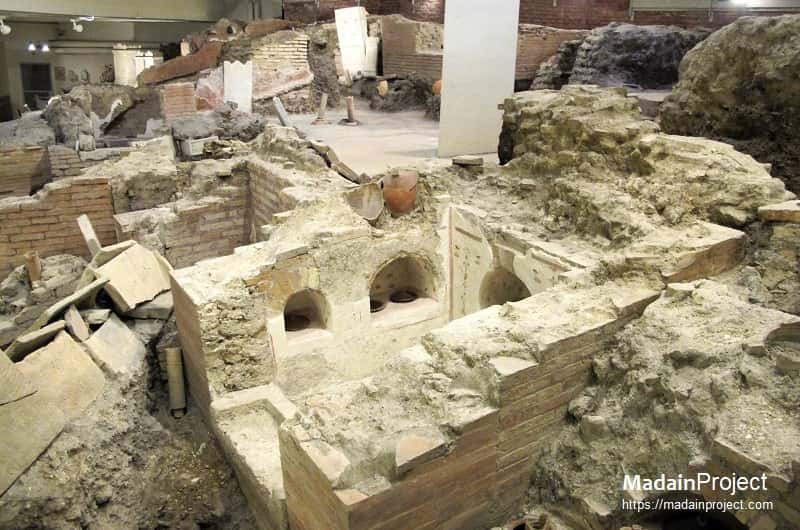The historic Vatican City (Citta del Vaticano) is a sovereign city-state and an enclave surrounded by the city of Rome, Italy. It is the smallest independent state in the world by both area and population, with an area of about 44 hectares and a population of around 800 residents. Vatican City is the headquarters of the Roman Catholic Church and serves as the residence of the Pope.
Vatican City was established in 1929 CE as a result of the Lateran Treaties between the Holy See and the Kingdom of Italy, which recognized the independence and sovereignty of the Holy See. Today, Vatican City is a unique combination of a religious and political center, and is home to several important religious and cultural institutions, including St. Peter's Basilica, the Sistine Chapel, the Vatican Museums, and the Vatican Library.

The Papal Basilica of Saint Peter, commonly known as St. Peter's Basilica, stands as an enduring symbol of Catholicism and a masterpiece of Renaissance architecture. Located within Vatican City, this magnificent basilica is a spiritual and cultural focal point, drawing pilgrims and tourists from around the globe. Read more

As an integral part of the Vatican City complex, Saint Peter's Square, also known as Piazza San Pietro, serves as a grandiose forecourt to the iconic St. Peter's Basilica. Designed by Gian Lorenzo Bernini, one of the preeminent architects of the Baroque era, the square is a masterful fusion of art, architecture, and spirituality. Read more

Nestled within the lush surroundings of the Vatican Gardens, the Villa of Pius IV, also known as Casina Pio IV, stands as a testament to the harmonious union of nature, art, and architecture. Commissioned by Pope Pius IV in the mid-16th century, this elegant villa was designed by the renowned Renaissance architect Pirro Ligorio. Read more
The Sistine Chapel (Capella Sistina) was built in the mid-fifteenth century CE and is renowned for its ceiling painted by Michelangelo between 1508 and 1512 CE. The ceiling is one of the most famous works of Renaissance art and depicts scenes from the Book of Genesis, including the famous "Creation of Adam". The Sistine Chapel has been used as a site for papal conclaves and is still used today as a place of worship. The ceiling is a masterpiece of perspective and anatomy, with figures that seem to depict near lifelike features. The Sistine Chapel was also decorated with frescoes by other artists, including Botticelli, Perugino, and Ghirlandaio, who painted scenes from the life of Moses and Jesus on the lower part of the walls.
The Saint Peter's Complex in Rome is a historical and religious site that includes Saint Peter's Basilica, Saint Peter's Square, the Vatican Museums, and the papal apartments (Apostolic Palace). The complex has a long and rich history, dating back to the fourth century CE when Emperor Constantine built a basilica over the site where Saint Peter was purportedly buried. Over the centuries, several popes have added to and expanded the complex, resulting in the magnificent structures that exist today. The most notable artistic and architectural additions were made by Bramante, Michelangelo, Bernini, and Maderno in the Renaissance and Baroque periods.

The Vatican Museums, known as Musei Vaticani in Italian, represent an unparalleled repository of art, history, and culture nestled within the confines of Vatican City. Established in the early 16th century by Pope Julius II, these museums have evolved into one of the world's most extensive and diverse collections, showcasing the artistic achievements spanning centuries. The crown jewel of the Vatican Museums is undoubtedly the Sistine Chapel, adorned with Michelangelo's transcendent frescoes, including the iconic "Creation of Adam". Read more

The Apostolic Palace, widely recognized as the Papal Palace or Palazzo Apostolico in Italian, stands as the nerve center of the Vatican City and serves as the official residence of the Pope. This architectural marvel, with its distinctive Renaissance and Baroque elements, houses not only the private apartments of the pontiff but also numerous chapels, Vatican Museums, and administrative offices. Read more

The tombs, situated along the slopes of Via Triumphalis, which runs alongside Vatican Hill (Mons Vaticanus), form a distinct landscape constructed on numerous terraces. This area features a diverse array of burial structures, items and tombs, both collective and individual, arranged along pathways and in squares, frequently utilized for ceremonies associated with the veneration of the deceased. Read more
The Codex Vaticanus, written in a style known as uncial script, is one of the oldest extant manuscripts of the Greek Bible, specifically the Old and New Testaments. This ancient manuscript is believed to have been written in the 4th century CE and is considered one of the most valuable biblical manuscripts in existence. The Codex Vaticanus is named after the Vatican Library, where it has been housed since at least the 15th century CE. The Codex Vaticanus is a parchment manuscript, and its original format is a quarto, meaning it was made from sheets folded in half.
Signup for our monthly newsletter / online magazine.
No spam, we promise.